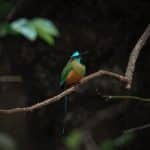In the United Kingdom, the unique and diverse wildlife is highly prized and valuable. Among the many species the UK is home to, the nightjar is one that often stands out. These birds are nocturnal, and they’re known for their distinct churring sound. However, due to various reasons like habitat loss and human activities, their numbers have been drastically dwindling.
Fortunately, there are various methods that can be used to monitor and protect these unique birds. One of the most effective is bioacoustic monitoring. This is a non-invasive and cost-effective method that uses sound recorders and recognizers to detect and monitor animal species such as nightjars.
A lire aussi : What’s the Potential for Electric Air Taxis in UK’s Urban Transportation?
Implementing Bioacoustic Monitoring Surveys
Bioacoustic monitoring surveys predominantly revolve around the use of audio recorders to capture species-specific sounds. The procedure involves placing these recorders strategically in areas where nightjars are suspected to inhabit. The devices are programmed to record at specific times, typically evening hours when nightjars are most active.
In the middle of these surveys, the recorders capture a wealth of data that can be used to study various aspects of the nightjar’s life. For instance, by analyzing their churring sounds, one can determine the gender of the bird, its mating status, and the approximate population in a particular area.
Cela peut vous intéresser : The most famous French songs by decade
To ensure you get the most from your bioacoustic surveys, it’s crucial to follow a systematic procedure. Start by identifying potential habitats, then place your recorders optimally to maximize their reach. Regularly collect your data and analyse it using a specialized recognizer for nightjars.
Using Recognizers to Analyze Data
After collecting the recordings, the next step is to analyse the data. In bioacoustic monitoring, this process involves using software known as recognizers. These tools are designed to identify species-specific sounds from the audio files collected by the recorders.
Recognizers have algorithms that match the patterns of the recorded sounds to known species’ sounds. For our case of nightjars, the recognizers would be able to pick out the churring sounds unique to this species.
However, it’s important to note that recognizers are not infallible. They may sometimes generate false positives or fail to detect some sounds. Therefore, it’s advisable to always manually listen to the recordings to confirm the recognizer’s findings.
Overcoming Challenges in Bioacoustic Monitoring
Despite its effectiveness, bioacoustic monitoring is not without challenges. Noise pollution, false positives, and the sheer volume of data are often the most common hurdles.
Noise pollution, especially from human activity, can sometimes interfere with the recorders. This makes it hard to capture clear bird sounds, affecting the accuracy of the surveys.
False positives – when the recognizer identifies non-target sounds as belonging to the target species – are also quite common in bioacoustic monitoring. To mitigate this, you can tweak the recognizer settings to make them more accurate. Additionally, manual validation of the recognizer’s results is often necessary to ensure accuracy.
Another challenge is the volume of data. A single recorder can generate gigabytes of audio files each night. Analyzing all this data can be time-consuming and resource-intensive. However, thanks to advancements in technology, there are now tools that can automate the analysis process, making it quicker and more efficient.
The Role of Bioacoustic Monitoring in Conservation
Bioacoustic monitoring plays a significant role in wildlife conservation. By providing accurate data on bird populations and their spatial distribution, it allows for better planning and execution of conservation efforts.
First, the data from bioacoustic monitoring can be used to identify areas that are rich in biodiversity. Such areas can then be prioritized for conservation.
Secondly, it allows for the monitoring of species trends over time. By regular recording and analysis of bird sounds, one can track changes in bird populations. If a certain species’ population seems to be declining, conservation measures can be put in place to prevent further decline.
Lastly, bioacoustic monitoring is less disruptive to wildlife compared to other methods of wildlife monitoring. By using sound recorders, we can study birds in their natural habitat without causing unnecessary disturbance. This makes it an eco-friendly approach to wildlife conservation.
While bioacoustic monitoring does not provide a panacea to the challenges facing wildlife conservation, it definitely offers a powerful tool to help protect and preserve our cherished species. With continued advancements in technology and more widespread adoption, the future of wildlife conservation is promising.
Optimizing the Use of Technology in Bioacoustic Monitoring
As we delve more into the sphere of bioacoustic monitoring, it is essential to understand the need to optimize the use of technology in this process. Digital audio recorders play an integral part in collecting auditory data of the nightjar activity, but so do robust software tools that interpret this data.
Bioacoustic recorders are usually set to start recording around dusk and dawn, the peak activity periods of the nightjars. The recorder settings play a pivotal role since they need to adjust according to the specific requirements of the study. The middle of the night is also a crucial time to capture the distinct churring and flight calls that nightjars are known for.
Once you have the audio files, you need to embark on the process of extracting meaningful information from them. This is where software like Google Scholar comes in handy. Designed to batch process and analyze large volumes of data, it significantly reduces the time and resources required in manual analysis.
However, it’s worth noting that the technology may sometimes yield false positives, which are instances where the software erroneously identifies sounds of other species or noise as nightjar calls. To minimize these errors, human surveyors need to cross-verify the results to ensure their validity.
Moreover, statistical tools can be employed to estimate the standard deviation (std error) from these recordings. A lower std error signifies more precision in the recordings, thereby improving the overall accuracy of the survey.
The Future of Bioacoustic Monitoring for Wildlife Conservation
Delving into the underbelly of bioacoustic monitoring, we can appreciate the immense potential it holds for the future of wildlife conservation, especially for unique species like the nightjars.
Monitoring the total number of detected nightjars along with their activity patterns can help us understand their behavioural traits and habitat traits better. This data, when studied over time, can enable scientists to predict future trends and devise effective conservation strategies.
Another considerable advantage of bioacoustic monitoring over traditional human surveys is its non-intrusive nature. As nightjars are nocturnal birds, human surveyors can inadvertently disrupt their natural activity. Bioacoustic monitoring, on the other hand, allows us to observe these creatures in their unaltered state, from dusk till dawn.
That being said, it’s important to recognise that bioacoustic monitoring is not a standalone solution to the challenges faced by wildlife conservation today. It needs to be integrated with other conservation strategies to yield effective results. Moreover, continuous research and technological advancement are essential to overcome the limitations and challenges associated with this method.
In conclusion, bioacoustic monitoring serves as an effective tool to gather comprehensive data on wildlife species like nightjars, aiding in their conservation. While it does come with its set of challenges, the future of bioacoustic monitoring in wildlife conservation is undoubtedly promising. With increased adoption and continuous advancements, it has the potential to revolutionise the way we approach wildlife conservation.











